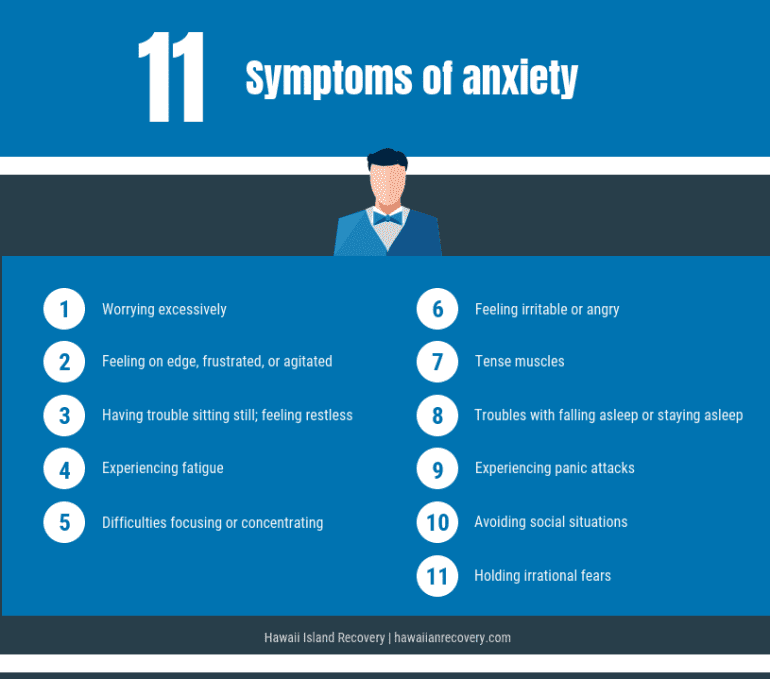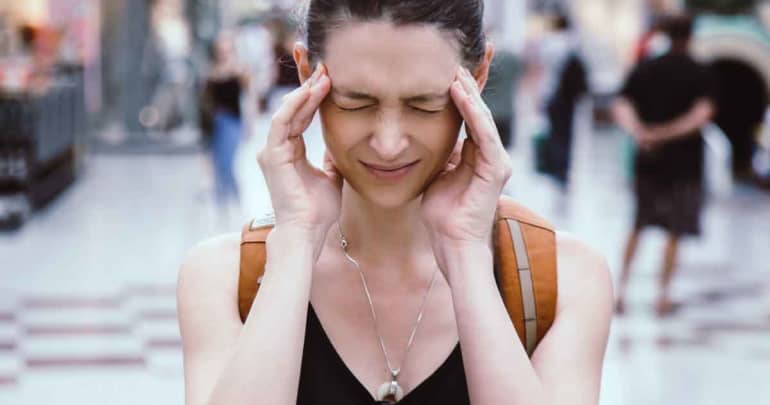It’s normal for most people to experience one or two symptoms of anxiety from time to time. Everyone gets nervous for a big presentation, a big family gathering, a job interview, or a first date. Most people also find themselves slightly on edge with the seemingly relentless demand to be available all of the time, whether to work or family or friends.
There is a big difference between some general, short-term anxiety and a diagnosed anxiety disorder, though. The symptoms of anxiety might look similar between the two but those with diagnosable anxiety experience it almost constantly.
How do you know if someone has an anxiety disorder? It’s always best to consult a psychiatrist for an official diagnosis but there are some clear symptoms of anxiety to look for. Continue reading to learn more about different anxiety disorders and the signs that someone you know might have one.

Looking for Symptoms of Anxiety
Those with anxiety disorders experience the same anxiety as others but on a regular or constant basis. Usually, their symptoms of anxiety make their everyday lives more difficult. Sometimes they find it impossible to carry out what seems like a simple task because of the overwhelming fear and nervousness.
What are some symptoms of anxiety?
There are quite a few different symptoms that help determine whether someone has an anxiety disorder. Some people experience all symptoms while others have only a few.
- Worrying excessively
- Feeling on edge, frustrated, or agitated
- Having trouble sitting still; feeling restless
- Experiencing fatigue
- Difficulties focusing or concentrating
- Feeling irritable or angry
- Tense muscles
- Troubles with falling asleep or staying asleep
- Experiencing panic attacks
- Avoiding social situations
- Holding irrational fears
If you notice someone shows some of these signs it might be a good idea for them to visit a psychiatrist. They can determine the exact type of disorder their symptoms of anxiety corresponds with and start treating it.
What are the different types of anxiety disorders?
Additionally, Psychologists grouped various signs of anxiety into different categories. Each category falls under the general umbrella of anxiety disorders but the categories help provide more specific comprehensive treatment. The types of symptoms people experience determine which category they fall into. There are three main categories of anxiety disorders.
Generalized Anxiety Disorder
People with a generalized anxiety disorder (GAD) live with a heightened sense of worry or anxiety most or all days. They must experience anxiety regularly for at least six months in order to receive a GAD diagnosis. Their fears may surround things like family life, work, school, social situations, or general happenings in life. Symptoms of a generalized anxiety disorder include:
- Feeling tense, on edge, or restless
- Tiring easily
- Having trouble focusing or concentrating
- Getting irritable or frustrated quickly
- Having tense muscles
- Struggling to control feelings of worry
- Having difficulty falling asleep or staying asleep
Generalized anxiety disorder often interferes with the person’s ability to navigate life. It may lead to problems at work or in school, or they might have a difficult time in social situations. This might make it challenging for them to meet people or form lasting relationships.
Panic Disorder
Many people think everyone with an anxiety disorder has panic attacks. This isn’t always the case. People who experience panic attacks usually receive a panic disorder diagnosis. Panic attacks are sudden and severe moments of incredible fear that come on and peak within minutes. They are often unexpected and might come on at any time. A panic attack includes:
- Difficulties controlling breathing
- Accelerated heart rate or heart palpitations
- Tremors or shakes
- Sweating
- Overwhelming feelings of inevitable disaster
- Inability to stop the oncoming attack
Panic attacks can happen anywhere at any time. Some people have panic attacks so severe that it keeps them from going places out of fear. If you know someone who lives with panic attacks that significantly interfere with their lives, you need to help them find treatment.
Phobia Disorders
Phobias are intense fears of certain objects or situations. Some phobias seem natural while others might not make sense to some people. Regardless of the object or situation, phobias are very real to the person who lives with them. They usually try to avoid anything that might place them in front of what they fear.
People with phobias may avoid these objects or situations to the point where it interferes with their lives. Psychiatrists break down the phobia disorder category into a few groupings, such as:
- Specific phobias: flying, spiders, clowns, blood, animals, etc.
- Social anxiety disorder: general fear of social situations
- Agoraphobia: an intense fear of using public transportation, being in open spaces, being in close quarters, standing in lines or crowds, or being outside of the home alone
- Separation anxiety disorder: fear of being separated from a person they are attached to
How can you treat anxiety disorders?
Treating anxiety disorders is a careful practice as some clinicians treat the symptoms rather than the source. Facilities that understand the process of properly treating anxiety disorders understand it’s deeper than symptoms of anxiety. Hawaii Island Recovery is one such facility that specializes in working with individuals who struggle with anxiety disorders.
Are you ready to find help for a loved one who struggles with symptoms of anxiety? Call us today at 877-721-3556 to learn more about our available programs and what we have to offer!
Get Help Today!
If you or a loved one need help, call Hawaii Island Recovery toll-free right now.
866-390-5070 Hawaii Island Recovery
Hawaii Island Recovery 










